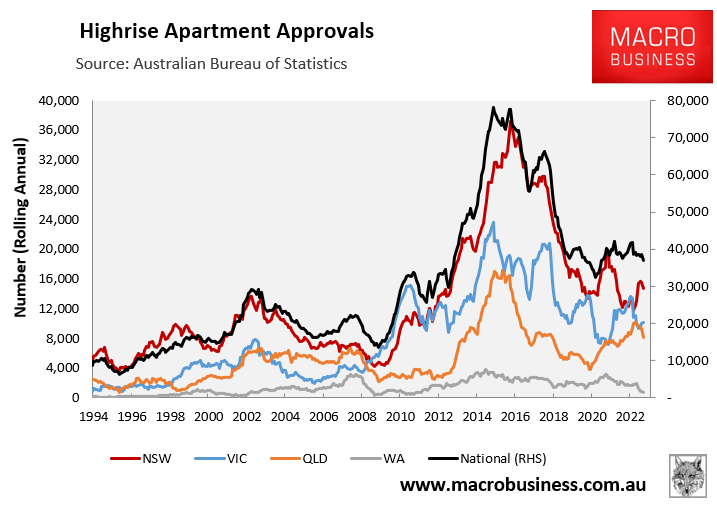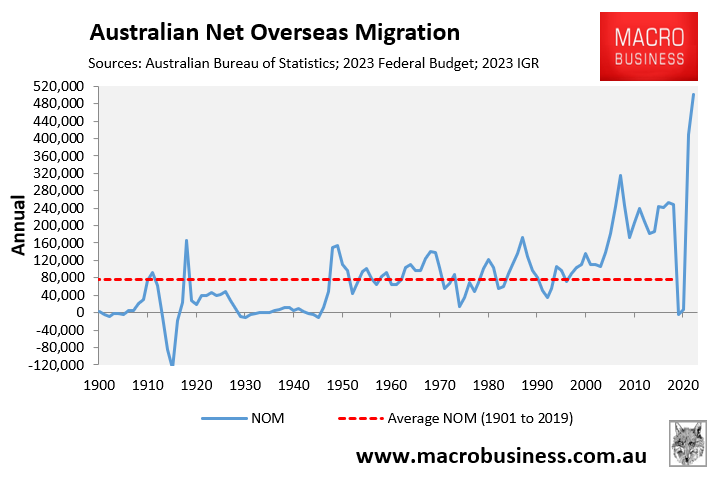The previous decade saw an unprecedented number of apartments built across Australia’s capital cities:

The boom in high-rise construction brought with it a swag of quality problems, including flammable cladding, cracking, water leaks, and balcony defects.
These defects have left owners deeply out of pocket, as well as cost taxpayers millions in rectification costs.
Building regulation consultant, Bronwyn Weir, cautioned that “thousands and thousands of apartments have serious defects in their buildings. [The problem] is enormous”.
“We have what is now you know, a systemic failure that is quite difficult to unravel”.
“Some of these buildings could potentially be a write-off”, she said.
Engineer Leith Dawes similarly cautioned that purchasing an off-the-plan apartment in Australia has evolved into a game of “Russian roulette”, referring to the many issues that often go unreported.
We reported last month that the One Central Park apartment complex in Sydney, once deemed the “world’s best tall building”, is riddled with defects a decade after its completion, necessitating expensive repairs.
The Age then reported that a five-year-old apartment complex consisting of twelve stories in Melbourne had been designated for demolition.
“We cannot let Melbourne become a city of disposable buildings – a city where new buildings are built on the cheap, to be knocked down every 20 years or so”, lamented Deputy Lord Mayor for the City of Melbourne, Nicholas Reece.
“We will end up with a throwaway city of junk buildings, as well as an unacceptable environmental cost”.
Australia is destined to repeat the fiasco all over again, with property consultancy Charter Keck Cramer projecting that Australia will need to complete between 72,000 and 78,000 apartments each year to meet the Albanese government’s 1.2 million housing target.
“The estimate is a huge increase from Australia’s current efforts, having built just 26,800 units during the 2022-23 financial year”, reports Realestate.com.au.
“Australia will need to build additional townhouses and houses as well, but new apartments will help deliver rental supply at the scale and speed needed”.
“Building that many new apartments could be a stretch for a sector already grappling with a major labour shortage. For context, home builders completed a record 64,400 new apartments during the 2017 financial year”.
The outcomes of an extended period of accelerated apartment construction will resemble those of the previous decade.
Construction standards will inevitably decline, and thousands more poor-quality high-rise apartments will be constructed in our main cities solely to meet the federal government’s turbocharged net overseas migration, which few Australians desire or support.

Instead of proceeding down a high-rise slum future, the federal government should cut immigration to a level that is commensurate with the nation’s capacity to deliver high-quality housing and infrastructure, along with the natural environment’s carrying capacity (including water supplies).

